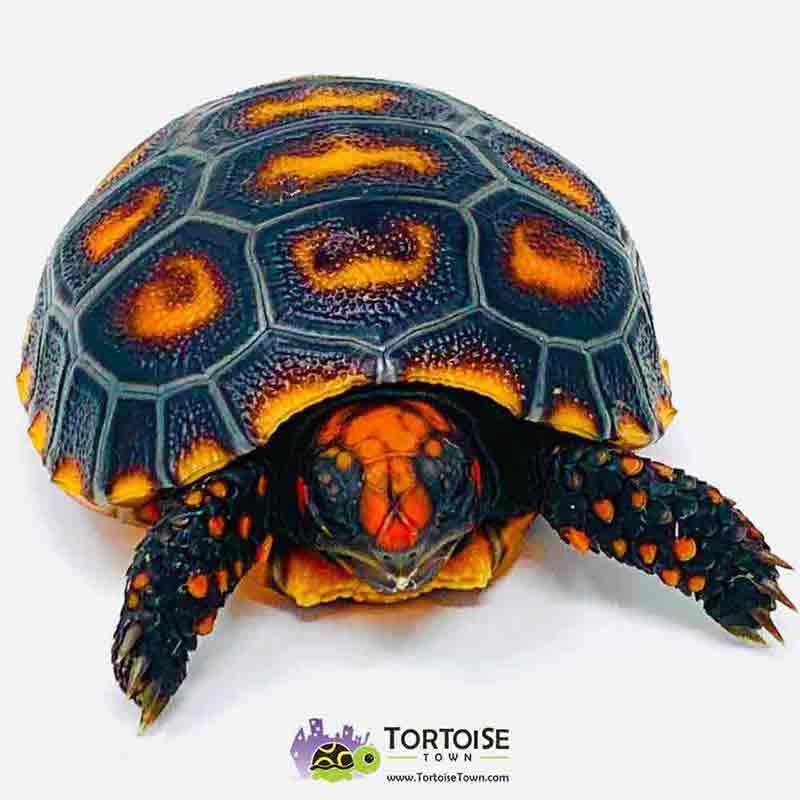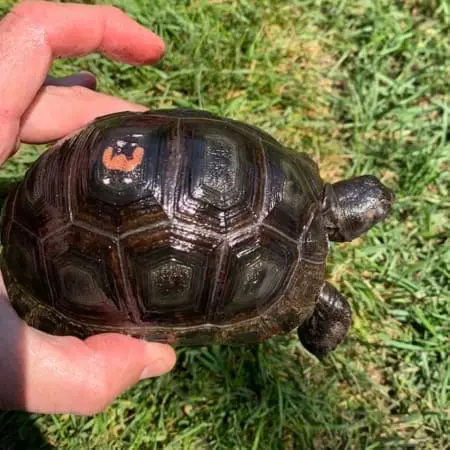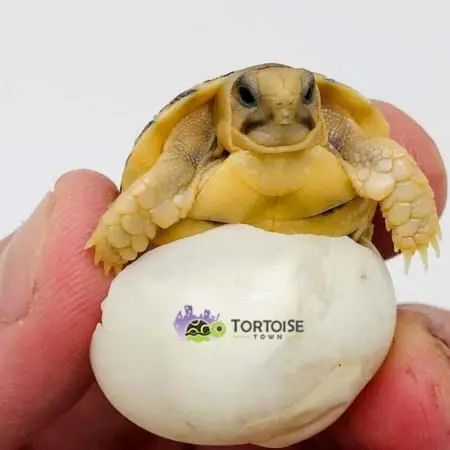Hermann’s Tortoise Care, Enclosure, Diet & Baby Hermann’s Tortoises
Hermann’s tortoises are charming Mediterranean tortoises known for their striking shells, moderate size and hardy nature. They are a favorite among keepers who want a small-to-medium tortoise with a lot of personality but without the massive space demands of giant species. When provided with the right habitat, diet and lighting, Hermann’s tortoises can live for many decades and remain active and engaging the entire time.
Tortoise Town is the best place to buy a tortoise because they focus on captive-bred Hermann’s tortoise babies raised under proper UVB and fed species-appropriate diets, giving new keepers a strong foundation.

Natural Habitat of Hermann’s Tortoises
Hermann’s tortoises are native to parts of Southern Europe and the Mediterranean region. They inhabit dry, scrubby landscapes, rocky hillsides and woodland edges where they can bask in the sun, take cover under brush and graze on a variety of wild plants. Seasonal changes in temperature and rainfall shape their activity patterns—warm summers bring intense basking and feeding, while cooler seasons may lead to reduced activity or even hibernation in some regions.
In captivity, we recreate these conditions by focusing on warm basking areas, cooler retreats, dry-but-not-barren substrates and mixed shade and sun. Good ventilation, UVB and secure, predator-proof enclosures are all crucial.
Hermann’s Tortoise Size & Personality
Hermann’s tortoises stay relatively small compared to many African species, making them ideal for carefully designed indoor tables and modest outdoor pens.
- Adult shell length: Usually 5–8 inches.
- Lifespan: 40+ years in captivity with proper care.
- Personality: Curious, active and often bold once settled.
Many Hermann’s tortoises quickly learn to associate their keeper with food and will walk right up to investigate, making them very rewarding to observe.
Enclosure Setup for Hermann’s Tortoises
Indoor Enclosures
Indoors, Hermann’s tortoises should be housed in open-topped tortoise tables or similar enclosures that offer space and ventilation.
- Provide at least 3–4 ft x 2 ft of floor space for a single adult (more for groups).
- Create a basking area around 95°F under a heat lamp.
- Maintain a cooler side in the mid-70s°F.
- Use a dry, diggable substrate such as a soil/sand blend or tortoise-safe bedding.
- Add multiple hides, rocks and visual barriers to reduce stress.
- Install high-quality UVB over a significant portion of the enclosure.
Outdoor Pens
In suitable climates, outdoor pens are highly beneficial. Natural sunlight, real soil and live plants enrich the tortoise’s life in ways that even the best indoor setup cannot fully replicate.
- Use solid fencing the tortoise cannot see through or climb.
- Bury part of the fencing to prevent digging escapes.
- Provide hides, overturned flowerpots, logs and shrubs for cover.
- Plant edible weeds and safe groundcovers for grazing.
- Ensure predator-proofing against dogs, birds, raccoons and other threats.

Hermann’s Tortoise Diet
Hermann’s tortoises are herbivores that thrive on a variety of high-fiber plants, much like other Mediterranean tortoises. A good diet is built on weeds, grasses and greens rather than fruits or protein-rich foods.
Staple foods include:
- Dandelion greens and flowers
- Plantain (broadleaf and narrowleaf)
- Clover in moderation
- Endive and escarole
- Turnip and mustard greens
Supplement with a plain calcium powder several times per week and always pair with strong UVB. Avoid fruit and animal protein, which can upset digestion and cause health issues.
Breeding & Raising Baby Hermann’s Tortoises
Breeding Hermann’s tortoises requires healthy, mature adults, ample space and careful monitoring of behavior. Males can become insistent during breeding season, and females need safe, quiet nesting areas with suitable soil for digging nests.
After eggs are laid, keepers gently excavate them and transfer them to incubators. Eggs are nestled in moist vermiculite or perlite and kept at stable temperatures until hatching, which can take several weeks to months depending on conditions.
Hatchling Hermann’s tortoises are tiny and delicate. They are best kept in warm nursery enclosures with shallow water dishes, plenty of hiding spots and finely chopped, species-appropriate greens and weeds. Daily or frequent soaks support hydration and shell development.
Hermann’s Tortoises as Family Pets
Because of their manageable size, hardy nature and engaging personality, Hermann’s tortoises can be excellent family pets for those willing to learn proper husbandry. They are not “cuddly” animals, but they are fascinating to watch as they graze, explore and interact with their environment.
Where to Buy a Hermann’s Tortoise
As always, starting with a healthy, captive-bred baby is crucial. Many new tortoise owners search for a tortoise for sale and soon realize they need to focus on where to buy tortoise that has been raised properly and ethically.
Captive-bred Hermann’s tortoise babies from an experienced tortoise farm adapt quickly, eat well and provide a much smoother experience than wild-caught or poorly started animals. By choosing a reputable source, you can spend your time refining your enclosure, diet and routines instead of treating preventable health issues.




